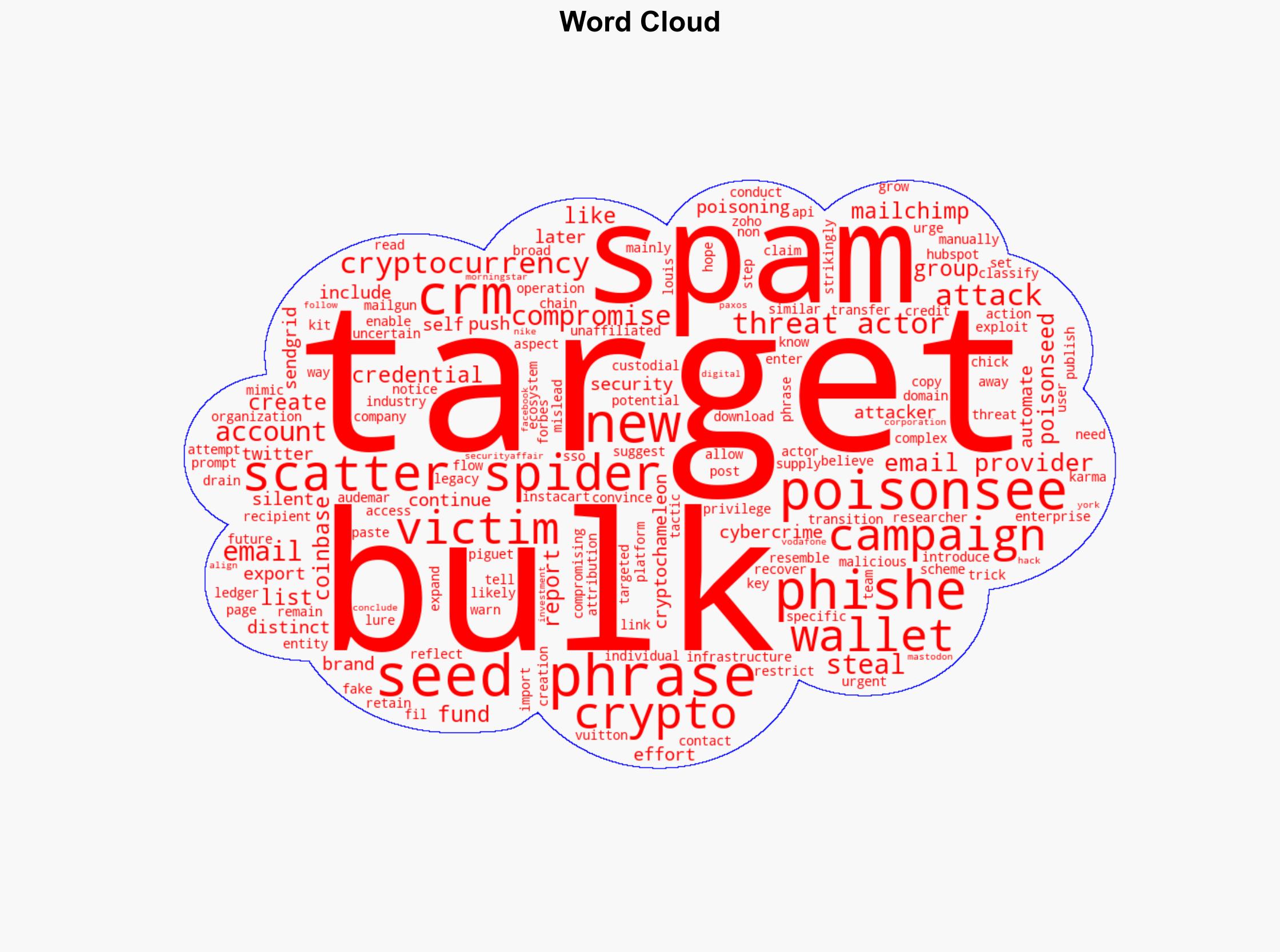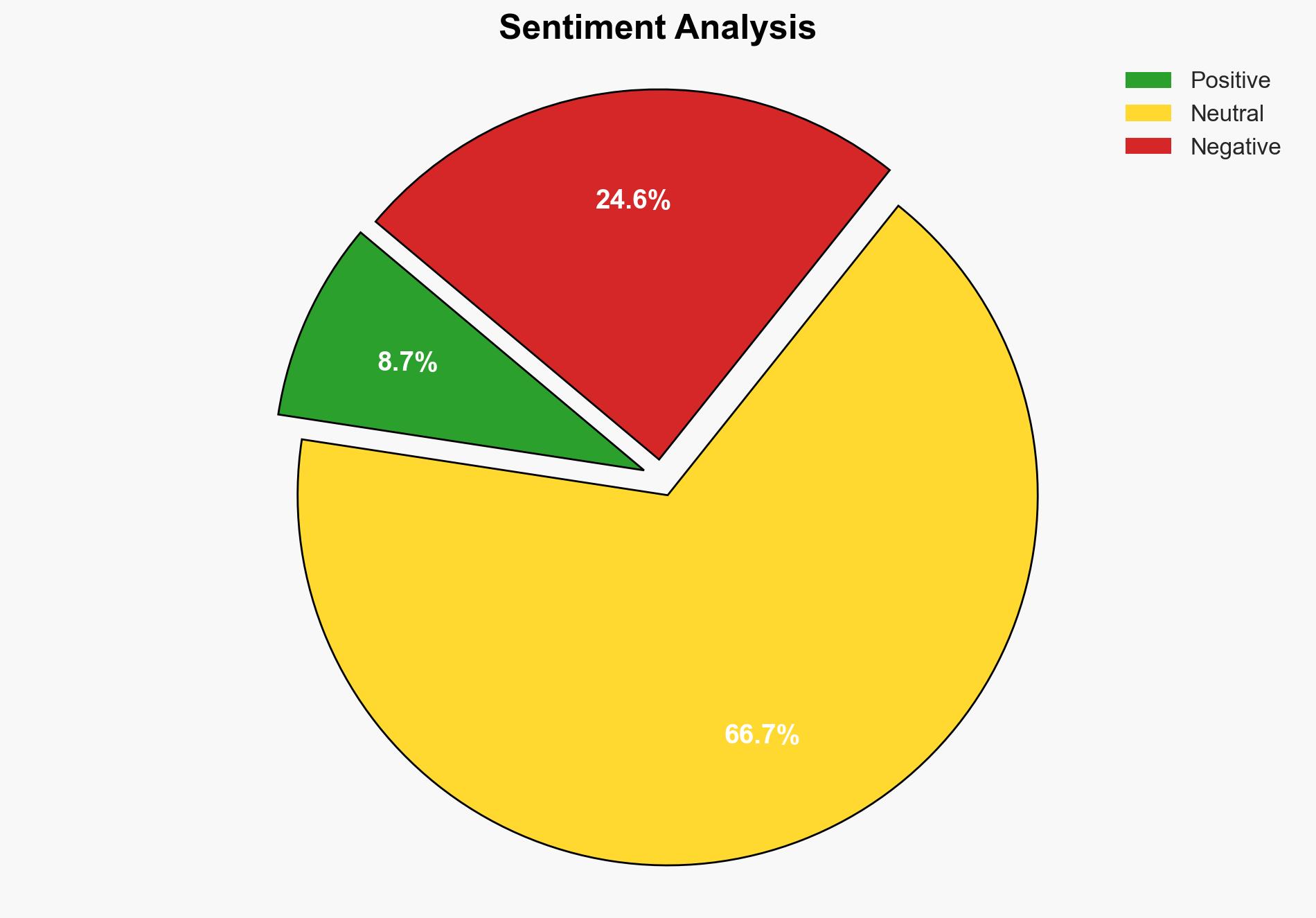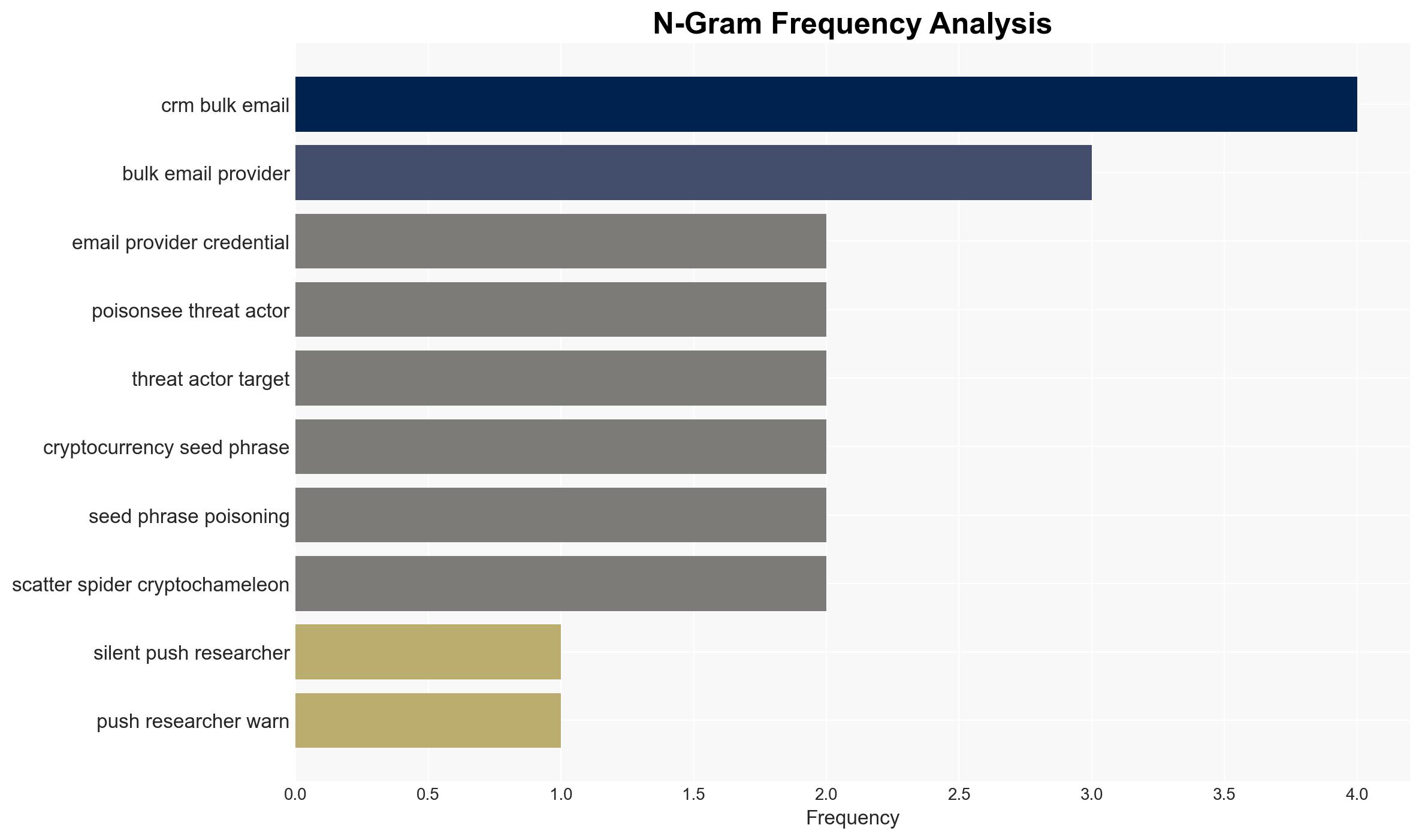PoisonSeed Campaign uses stolen email credentials to spread crypto seed scams and and empty wallets – Securityaffairs.com
Published on: 2025-04-07
Intelligence Report: PoisonSeed Campaign uses stolen email credentials to spread crypto seed scams and empty wallets – Securityaffairs.com
1. BLUF (Bottom Line Up Front)
The PoisonSeed campaign is actively exploiting stolen email credentials from CRM and bulk email providers to conduct phishing attacks targeting the cryptocurrency sector. The campaign’s primary objective is to deceive victims into importing compromised seed phrases into their cryptocurrency wallets, allowing attackers to drain funds. This operation poses a significant threat to both cryptocurrency and non-cryptocurrency entities, with potential implications for financial stability and cybersecurity integrity.
2. Detailed Analysis
The following structured analytic techniques have been applied for this analysis:
General Analysis
The PoisonSeed campaign leverages stolen credentials from CRM platforms like Mailchimp, SendGrid, and others to send bulk phishing emails. These emails are designed to mimic legitimate security steps, misleading users into self-compromise. The campaign targets both enterprise organizations and individuals within the cryptocurrency industry, including companies such as Coinbase and Ledger. The attackers create convincing phishing pages to lure victims into providing their seed phrases, which are later used to access and empty their cryptocurrency wallets. The campaign’s tactics resemble those of known groups like Scatter Spider and Cryptochameleon, suggesting either collaboration or imitation.
3. Implications and Strategic Risks
The PoisonSeed campaign presents several strategic risks:
- Increased vulnerability of the cryptocurrency sector to phishing and credential theft.
- Potential financial losses for individuals and enterprises due to compromised wallets.
- Heightened risk of reputational damage for targeted companies and platforms.
- Broader implications for cybersecurity practices and trust in digital financial systems.
These risks could undermine national security, regional stability, and economic interests if not addressed promptly.
4. Recommendations and Outlook
Recommendations:
- Enhance security protocols for CRM and email service providers to prevent credential theft.
- Implement multi-factor authentication and regular security audits for cryptocurrency platforms.
- Increase awareness and training for individuals and organizations on phishing and cybersecurity threats.
- Encourage regulatory bodies to develop frameworks for better protection of digital assets.
Outlook:
Best-case scenario: Enhanced security measures and awareness campaigns significantly reduce the success rate of phishing attacks, protecting digital assets and restoring trust in cryptocurrency systems.
Worst-case scenario: Continued exploitation of vulnerabilities leads to widespread financial losses and erosion of confidence in digital financial systems.
Most likely scenario: Incremental improvements in security and awareness mitigate some risks, but persistent threats continue to challenge the cryptocurrency sector.
5. Key Individuals and Entities
The report mentions significant individuals and organizations involved in the PoisonSeed campaign:
- Coinbase
- Ledger
- Mailchimp
- SendGrid
- HubSpot
- Mailgun
- Zoho
- Scatter Spider
- Cryptochameleon
These entities are either targets or tools used in the campaign, highlighting the complex and interconnected nature of the threat landscape.





